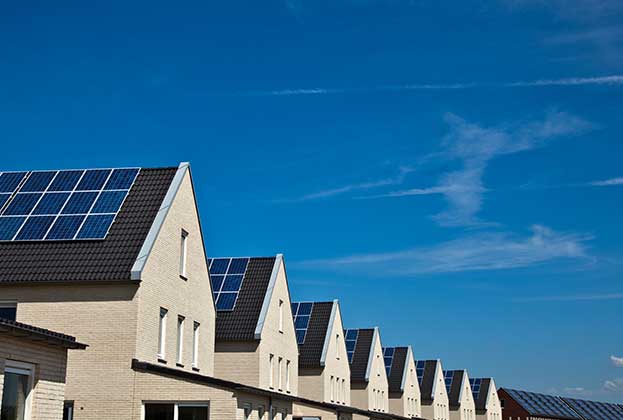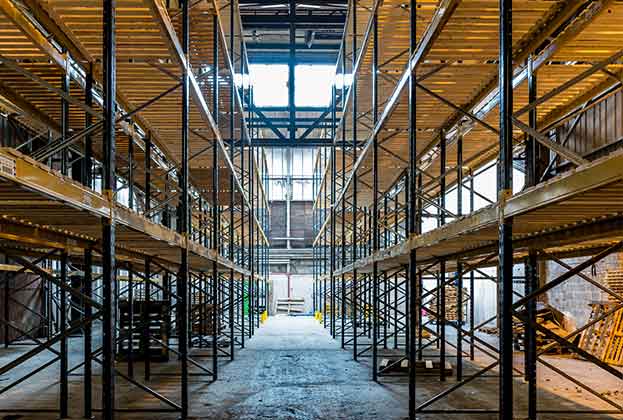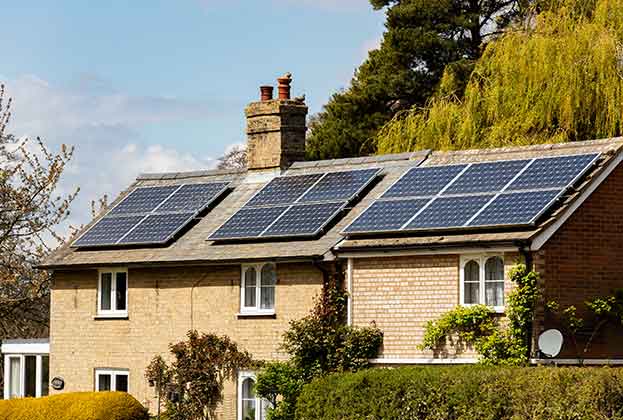We look at the key reasons why making commercial property more environmentally sustainable is less of a challenge than it is for residential stock
A large proportion of the commercial stock in the UK requires further investment to become environmentally sustainable – 87% of the office stock in the UK’s major office markets has an EPC rating of C or below. However, there are a number of reasons why this should be less of a challenge than doing the same for residential property. These include:
- Size – Not only is the commercial property sector much smaller than the residential one, but the size or value of individual assets is generally larger. This means that fewer decisions and interventions will be needed to improve the stock in the office and logistics sectors.
- Ownership – The majority of commercial property is owned by either corporate or institutional investors. Most of these investors have their own environmental, social and governance (ESG) targets and thus will be making the changes that need to be done in line with or, in some cases, ahead of legislative changes.
- Re-investment – Investors in commercial property have always factored in the costs of obsolescence to ensure that their asset remains lettable at the best market rates in the future. This means that in certain parts of the market, for example, City of London offices, up to half of the entire stock has been refurbished or redeveloped in the last 20 years.
Our research shows that while there may not be a guaranteed green rental premium in the office market, you are 70% more likely to achieve a top decile rent if your building has a BREEAM rating of Very Good or better.
- Understanding – With labelling systems such as BREEAM and LEED becoming increasingly common throughout the last 20 years, a rising proportion of all new build stock has been built to these standards. This trend continues, with 44% of central London office developments that started this year targeting a BREEAM rating of Very Good or above.
- Financeable – The rise in availability of green debt and equity and the evidence that already exists that greener buildings cost less to run, means that there is less persuasion (or government investment) needed to make the commercial property stock more sustainable.
The challenge remains the older standing stock
In common with the residential sector, there is still a large proportion of the commercial property stock in the UK that needs further investment as the chart 'EPC ratings of office stock' shows.
Offices
Rising costs of mitigating obsolescence will be a challenge, but not an insurmountable one
The bulk of both the existing and planned office space in the UK is owned by professional investors, most of whom are aware that they have to invest in keeping their assets lettable. While there are challenges that owners face in terms of the ability to influence the behaviour of their tenants, we expect to see this becoming less of an issue as EPCs give way to measures that monitor actual energy usage, such as DECs (Display Energy Certificates) or NABERS (National Australian Built Environment Rating System).
Tenant demand is already rising for greener office buildings, and 45% of all central London office lettings since 2018 have been on space with a BREEAM rating of Excellent or better. The bigger challenge might be on the supply side, with only 44% of the planned development completions over the next three years aiming for a similarly high rating.
87% of the office stock in the UK’s office markets has an EPC rating of C or below
Tom Whittington, Director, Commercial Research
However, an undersupply of the greenest space might not be a bad thing at this time, as it will push up rents and thus firmly prove that there is a 'green premium'.
Retail
Small units and fragmented ownerships present a challenge
What needs to be done to get retail property to be carbon neutral? British shops emit over 8 MtCO2e more than the emissions targets derived from current Building Regulations. Ambitious targets to decrease carbon footprints through the Minimum Energy Efficiency Standards (MEES) mean that 185 million sq ft of retail outlets may be unlettable by 2023. To meet the minimum B grade standards being considered for 2030, 1.4 billion sq ft (83% of stock) will need to be improved. This will come at a considerable cost and, in many cases, may not be economically viable. So who pays for it?
For large institutional landlords, ESG obligations and lettability of space will be key drivers in reducing outlet emissions. The size of their individual investments and access to capital will increase viability. However, most retail property emissions are not associated with shopping centres, retail parks and large high street blocks, which only account for around 25% of retail property emissions, the rest being from smaller investors, largely in fragmented ownership.
Smaller ownerships, which account for the vast number of individual premises, are often located in secondary and tertiary pitches and in smaller individual units. Small shops are more difficult to retrofit, or are much older and it is, therefore, little surprise that the average unit size of A-rated retail property is five times as large as G-rated properties.
There is also a strong correlation between the worst-performing assets and high retail vacancy rates, which begs the question in some instances whether bringing some shops up to grade will actually be worth the investment. Either way, it is shops outside of both key ownerships and core trading locations that are likely to require more government intervention, policy and support to drive the change.
Logistics
Greater utilisation of rooftop solar could make the sector almost energy neutral
There is currently 583m sq ft of warehouse space in the UK in units of 100,000 sq ft and above, and by 2030 we estimate that this figure will rise to 832m sq ft. These units are typically large, single-storey buildings with extensive roof space, offering a potential location to install rooftop solar panels that could provide green energy back to the occupier of the building and therefore reduce their energy requirement from the grid.
Working on the assumption that, on average, around 40% of a warehouse roof may be suitable for the installation of solar panels means we can, therefore, estimate how much energy could be created. Based upon this calculation, the additional 250m sq ft of warehousing due to be delivered in the next decade could deliver 1700 MW of energy, which is 97% of the total energy need from the new development.
Work to retrofit existing stock with rooftop solar may be challenging due to the weight-bearing capabilities of older units, but the potential for new build units to be energy neutral is clear.
Read the other articles within Spotlight: Real Estate and the Carbon Challenge below
.jpg)



